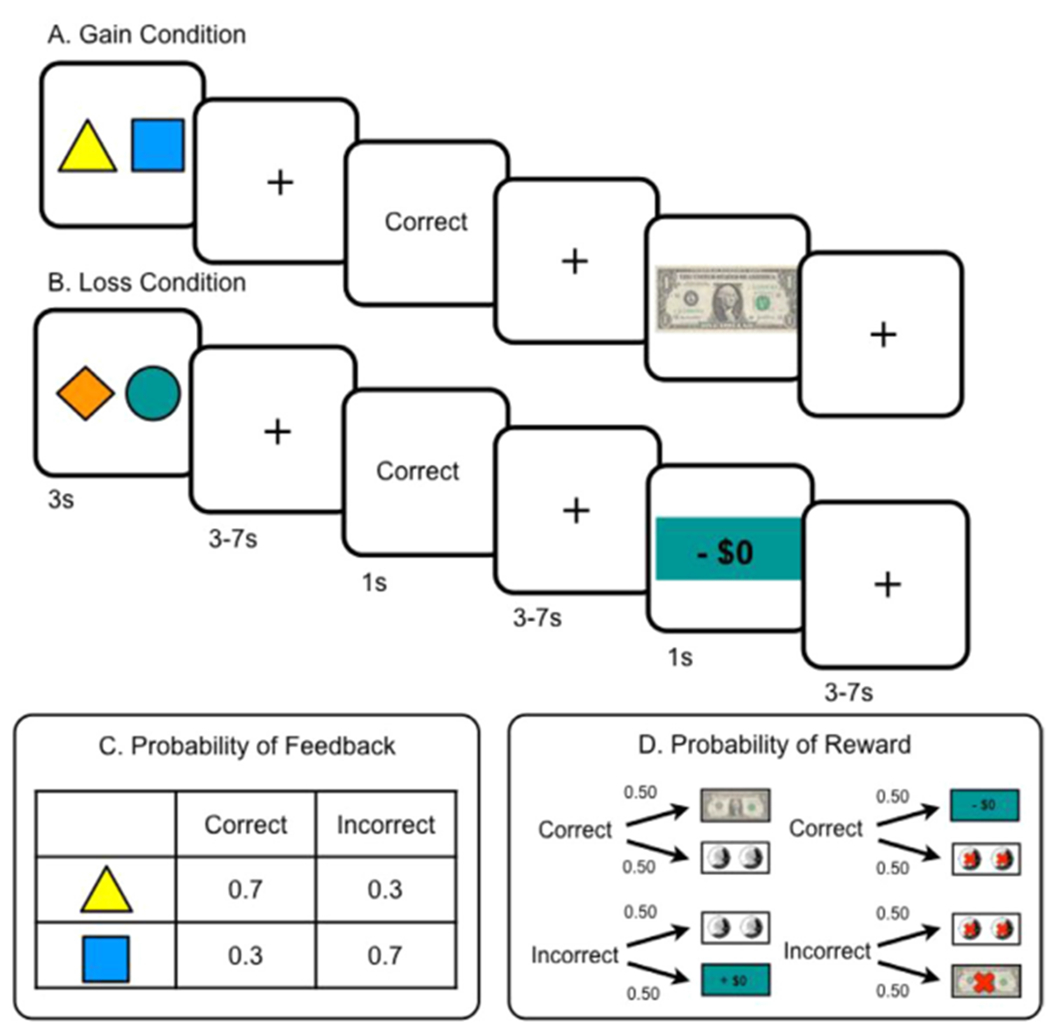Fig. 1.

Reinforcement Learning Paradigm. Each participant completed a probabilistic reward-based learning task in two contexts, (A) incentivized by gaining money, and (B) incentivized by avoiding losing money. Condition order and stimuli were counterbalanced. (C) There was a 70/30 probabilistic contingency that linked the choice to verbal feedback. Though expected value was higher with “correct” feedback and lower with “incorrect” feedback, there was a (D) 50% uncertainty of reward receipt magnitude.
